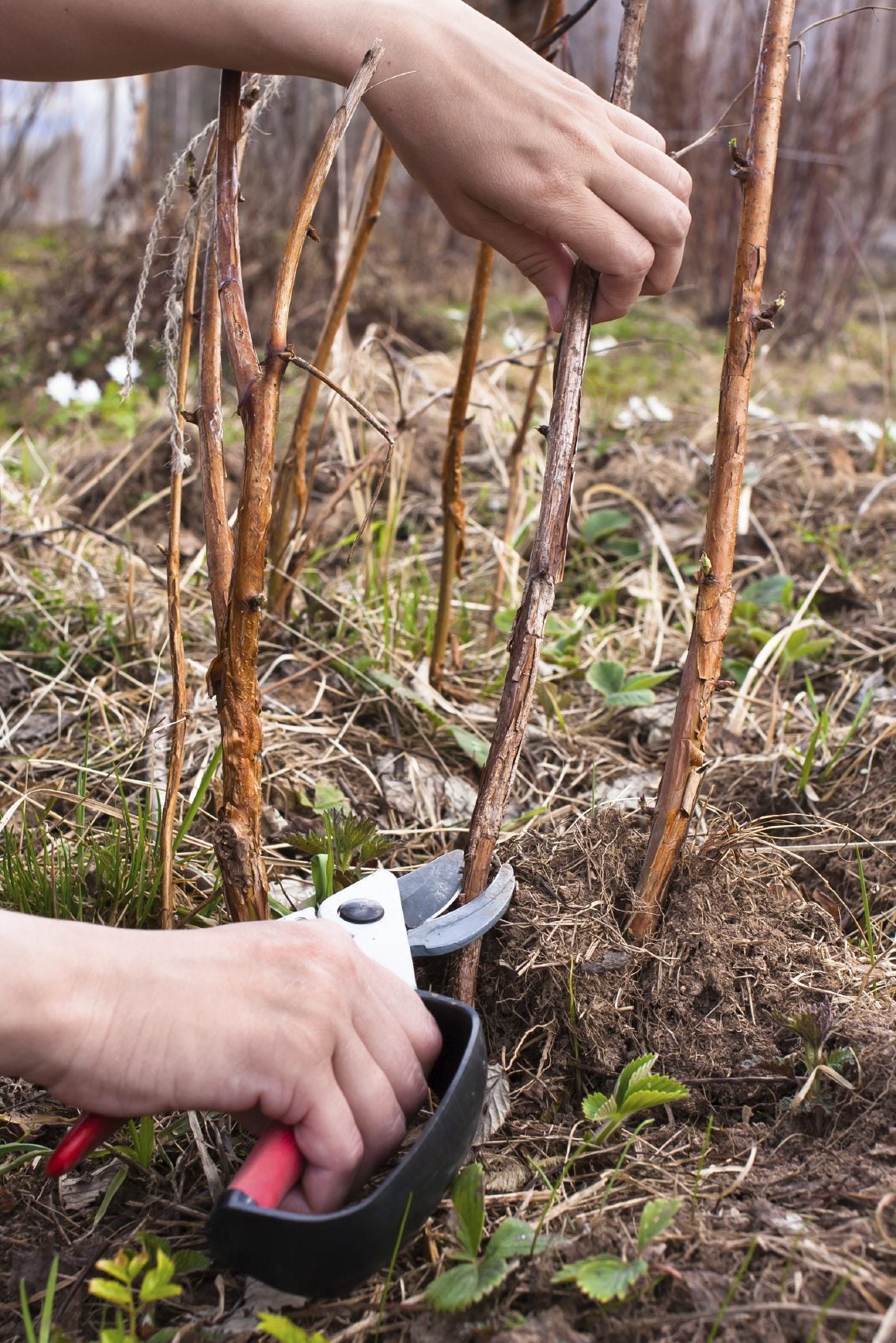Fall-Bearing Raspberry Pruning: Tips On Pruning Fall-Bearing Red Raspberries


Some raspberry bushes bear fruit at summer’s end. These are called fall-bearing or ever-bearing raspberries, and, to keep that fruit coming, you must prune the canes. Trimming fall-bearing red raspberries isn’t difficult, once you figure out whether you want one crop a year or two. If you want to know how and when to trim fall-bearing raspberry canes, read on. To understand the rules for trimming fall-bearing red raspberries, it’s important to get a clear idea of their growth cycle. The roots and crowns of these plants live for many years, but the stems (called canes) only live for two years. In the first year, the canes are called primocanes. At this point, the canes are green, and you will see them form fruiting buds. The buds are at the tips of the primocanes fruit in autumn, while the lower cane buds do not fruit until early the following summer.
When to Trim Fall-Bearing Raspberry Canes for One Crop
If you want to know when to prune fall-bearing raspberries, the answer depends on whether you want to harvest the summer crop. Many gardeners sacrifice the summer raspberry crop and only harvest the fall crop, which is superior in quality. If you decide to sacrifice the early summer crop, you simply prune all of the canes to the ground at the end of winter. New canes will grow every summer, fruit in fall, then get pruned out in early spring. If you only want the fall crop, learning how to prune a fall-bearing raspberry bush is not difficult. You simply cut each cane as close to the ground as you can. You want the new buds to grow from below the surface of the soil, not from cane stubs.
How to Prune a Fall-Bearing Raspberry Cane for Two Crops
If you want to harvest raspberries from both the fall and early summer crop, fall-bearing raspberry pruning is somewhat more complicated. You have to distinguish between the first-year canes (primocanes) and the second-year canes (floracanes) and prune them differently. First-year primocanes are green and fruit in the fall. The next summer, these canes are starting their second year and are termed floracanes. By this time, they are darker with peeling, gray bark. The floracanes fruit from the lower buds in the summer, and at the same time, new first-year primocanes will be growing in. When winter comes, you must prune these floracanes to the ground, taking care to distinguish them from the green primocanes. You’ll want to thin out the new primocanes at the same time, only leaving the tallest, most vigorous canes.
Sign up for the Gardening Know How newsletter today and receive a free copy of our e-book "How to Grow Delicious Tomatoes".

Teo Spengler is a master gardener and a docent at the San Francisco Botanical Garden, where she hosts public tours. She has studied horticulture and written about nature, trees, plants, and gardening for more than two decades, following a career as an attorney and legal writer. Her extended family includes some 30 houseplants and hundreds of outdoor plants, including 250 trees, which are her main passion. Spengler currently splits her life between San Francisco and the French Basque Country, though she was raised in Alaska, giving her experience of gardening in a range of climates.